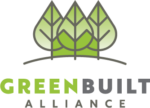How does a local government succeed in making the transition to 100 percent renewable energy?
I don’t know.
Wait. As the person who has been charged with spearheading this initiative on behalf of Buncombe County, I’m not supposed to admit that out loud (or even worse, in writing!). Frankly, my penchant for occasionally being too honest has gotten me in trouble on more than one occasion, but since I’m the one writing the article, I can also take the time to clarify, so stick with me.
In 2017, the Buncombe County Commission joined several local governments around the country in adopting a resolution that set a goal of reaching 100 percent renewable energy for County operations by 2030 and for the broader community by 2042.
It’s an aspirational goal to be sure, and a timeline that is more ambitious than most. So as you can imagine, “how do we get there?” is one of the more common questions I get on the subject. (By the way, if anyone reading this has a super easy answer to that question, drop what you’re doing and call me immediately.)
When I say the answer to that question is “I don’t know,” I don’t actually mean that we have no idea what we’re going to do. What I really mean is that there isn’t any single method through which a community like ours can make this goal a reality. It’s a complex issue, so naturally it has a complex solution.
The Buncombe County Office of Sustainability has a relatively small staff. By relatively small, I mean the staff consists of just me. So am I going to do this all by myself? Well I do know the answer that one. In case you are wondering, it’s no – definitely no.
This is going to take the entire community – local governments, utility companies, nonprofits, the business community, and of course individual citizens. We will all have to play an active role in making this happen. If we are to be successful, this is a journey we have to take together and the County is in a great position to help lead the charge by setting a goal that will help push our community toward a clean energy future.
A major challenge in these efforts is translating sustainability ambitions into concrete actions and specific information across a community. One of the first steps we’re taking, in partnership with the City of Asheville, is to create what we are calling “A Roadmap to Renewables.”
The intent is to implement a planning process through which we can identify the concrete and actionable steps our community can take to reach our goal. A commitment to 100 percent renewable energy is a call to action. This has to be about more than just “where we can install more solar?”
We need to identify things like:
- Potential City/County collaboration on renewable projects
- Increasing commercial/residential energy-efficiency efforts
- Opportunities for public/private partnerships
- Reducing institutional barriers such as city/county permitting processes and Duke’s interconnection application bottleneck
- Working with Duke Energy to continue to increase renewables in its portfolio
- Factoring in advancements in new technology like coupling renewables with battery storage
The list goes on and on.
Another major step in moving us toward our goal has been the creation of the Blue Horizons Project. Blue Horizons is a joint venture between local governments, community organizations and Duke Energy. The idea is to provide a centralized hub for all things clean energy in Buncombe County.
From residential weatherization programs to commercial solar installation and all things in between, Blue Horizons Project can help individuals and businesses access the resources they need to save money and help the community reach its clean energy goals. Undoubtedly I am biased, but I think it’s pretty cool. (For more information on the Blue Horizons Project, read the article on page 48.)
In case you haven’t noticed the theme here, what I’m saying is that clearly there is no magic bullet to get to 100 percent renewable.
I would however like to amend my initial statement. I think there actually may be an answer to the question of, “How do we get there?”
I think the answer is: Together.
Jeremiah LeRoy became the Sustainability Officer for Buncombe County in 2017, bringing with him to the job a wealth of experience in finance, tax, and IT departments. He has worked for the county government for more than a decade.
You can also view this article as it was originally published on page 58 of the 2018-2019 edition of the directory.

